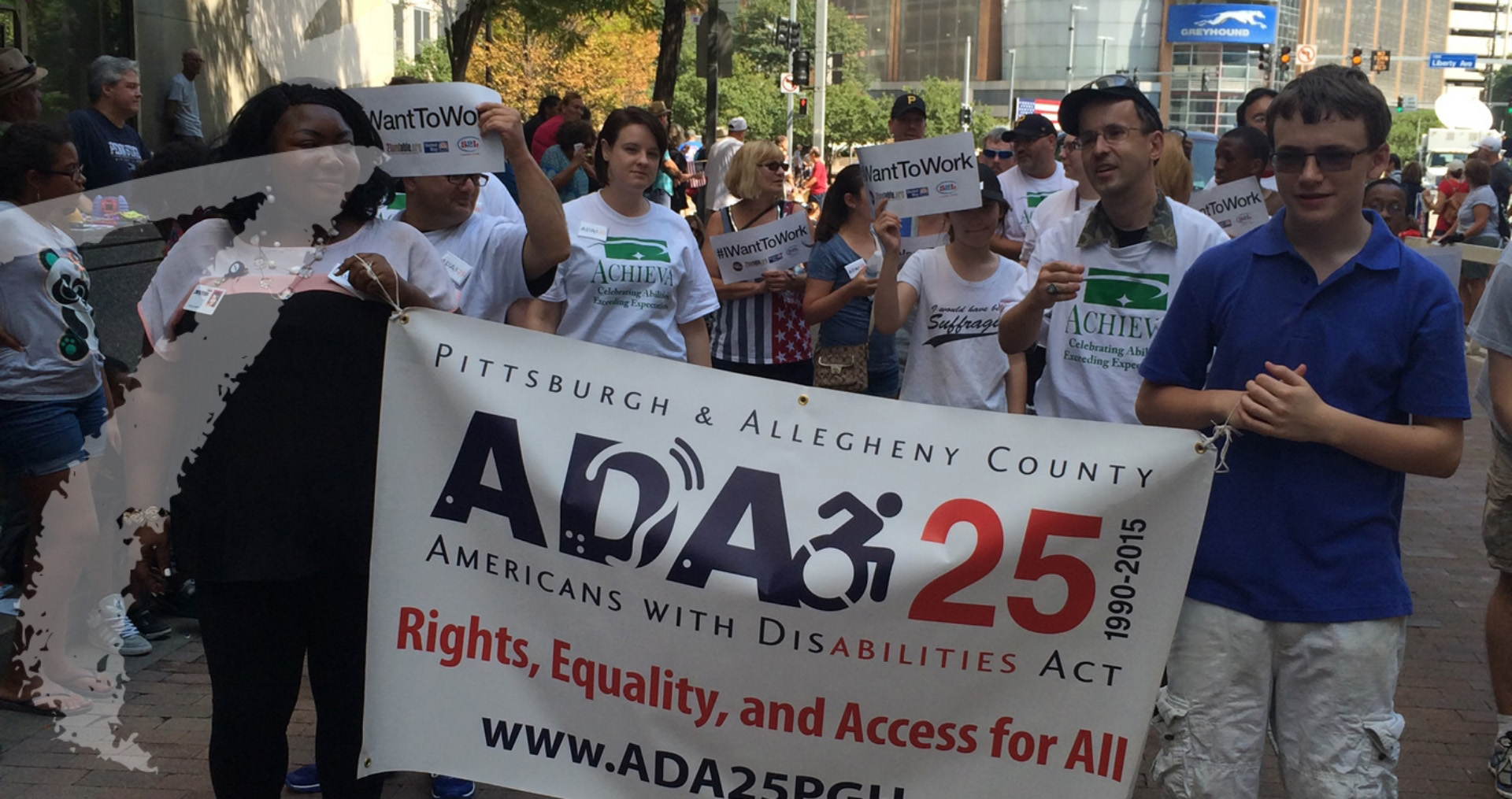Kristy Trautmann, December 10, 2019
Nineteen years ago, I went to an apple-tasting party. Twenty kinds of apples were showcased, prepared in a hundred ways. Who knew?!? I was juggling my little plate with three kinds of apple pie, looking for a place to sit my cider down. I spied a folding chair and shared an improvised coffee table with someone who ended up changing my life. Dr. Carolyn Hoffman was a professor of rehabilitation at Indiana University of Pennsylvania and had focused her career on inclusion of people with disabilities. I told her that I didn’t know anything about disability, so she made it a personal crusade to educate me. I’ve been learning from and with people with disabilities for nearly twenty years, and I’m still learning today.
Through Carolyn, I learned that disability means a lot more than using a wheelchair or cane. There are also sensory disabilities – hearing loss or deafness and vision loss or blindness. Some disabilities make it difficult to communicate. Most disabilities are not readily apparent, at least at first glance, including learning disabilities, depression, post traumatic stress disorder, memory loss, brain injury, autism, intellectual disabilities and many others. Some disabilities are present at birth, others emerge in childhood, and still others are acquired through the aging process, accidents or illness. Disability, it turns out, is a very common part of human experience. Nearly 20% of Americans have a disability, and most of us will experience some form of disability at least temporarily. Carolyn also introduced me to a whole community of advocates, many of whom continue to teach me today.
The more people with disabilities I met, the more I began to see accessibility barriers that I had never noticed before. My favorite neighborhood walks included sidewalks made dramatically uneven by tree roots. Restaurants I loved were loud or dark, menus were printed in small script font; a surprising number of them had restrooms that were down steep steps. Many of Pittsburgh’s charming neighborhood business districts include storefront after storefront of one-step entrances. The R-word (retarded) was casually used as an insult or put-down. It’s two decades later, and not much has changed. How could this be?
In America, we have a long history of “separate and unequal” when it comes to people with disabilities. We frequently use the term “special needs” as a descriptor. But needing to go to school, to work, or to the store, to the doctor and the movies, to use public transportation, sidewalks and parks – these are not special needs. People with disabilities want access to the same things that everyone else takes for granted. Since July 26, 1990 when the Americans with Disabilities Act was signed by President George H.W. Bush, these have been protected civil rights. And yet, people with disabilities continue to be left out or forgotten about, even by government officials, foundations and nonprofits focused on creating inclusive communities.
I don’t believe this pattern is about any personal intention to discriminate. It is the result of a long history of how our country has treated people with disabilities as broken, damaged, without value and a burden on society. Most of us carry unexamined remnants of long-accepted practices of shutting people with disabilities away, of segregated “special” places or institutions for keeping people with disabilities out of sight, behind walls, and sometimes literally in cages and restraints. (If you would like to learn more about this history, Wrongs to Rights is an excellent short film that explores the deinstitutionalization of people with intellectual disabilities.) When we forget to think about people with disabilities, this isn’t by accident; we’re continuing to live out that history of exclusion today.
But we can all learn and do better. People with disabilities can be allies and assets in our work. Living in a world full of barriers cultivates creativity and resourcefulness. In this light, removing barriers and being more intentional about including people with disabilities isn’t about starting something new. It’s about being more effective, fairer, more just in the work we are already doing. It’s about seeing the barriers that we miss, and the ones we create, and doing something about them.
I am lucky to work at the FISA Foundation, and we were fortunate that Carolyn led our grant review committee for many years. We’ve put all that we have learned into a new partnership with The Heinz Endowments called Disability Inclusion & Access: Moving Forward. For details, see: www.DisabilityInclusionPgh.org. You’ll find videos of local advocates, links to upcoming webinars, and a library of easy-to-use tools to address very basic accessibility barriers. Take a look and let me know what you think!

Tripping over barriers, and learning from them
Back to News
